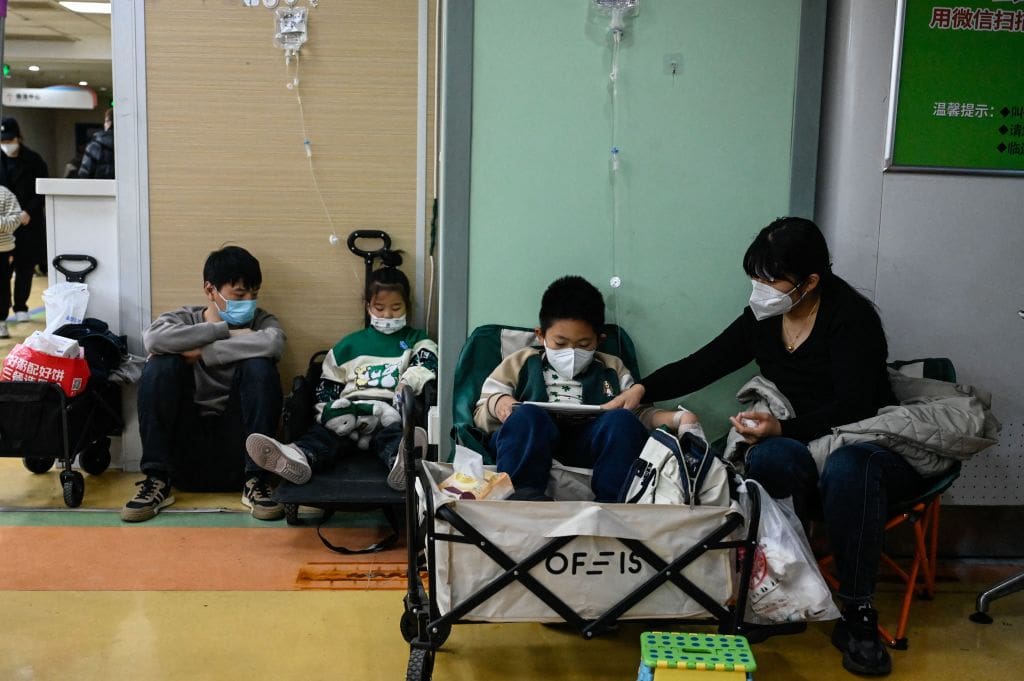Health
World Health Organization Seeks Information on Surge of Respiratory Illnesses in Chinese Children
 courtesy of time.com
courtesy of time.com
The World Health Organization (WHO) has reached out to Chinese officials for detailed information regarding a significant increase in respiratory illnesses, including pneumonia, among children. This comes as pediatric medical centers across the country are becoming overwhelmed with patients.
Undiagnosed Pneumonia in Children
The WHO's request for information was prompted by reports, including one from ProMED, which tracks global outbreaks of infectious diseases. ProMED recently issued a warning about an "undiagnosed pneumonia in children in northern China." In response, the WHO has asked Chinese officials for additional epidemiological and clinical information, as well as test results.
Resurgence of Respiratory Pathogens
China is experiencing a resurgence of various respiratory pathogens, particularly as the country enters its first winter after relaxing strict Covid-19 restrictions. The impact of these pathogens appears to be particularly severe among children.
The WHO stated, "It is unclear if these are associated with the overall increase in respiratory infections previously reported by Chinese authorities, or separate events."
Infections and Pneumonia in Children
Local media has reported a steady rise in infections among kindergarten and primary school children caused by a pathogen called mycoplasma. While this germ typically leads to mild colds in older children and adults with strong immune systems, younger children are more susceptible to developing pneumonia, which can last for weeks.
Data from the Chinese Center for Disease Control and Prevention also shows a steady increase in influenza positivity rates in October, even as Covid rates decline following a small peak during the summer.
Concerns at China's Top Medical Center
Beijing Chaoyang Hospital, China's leading medical center for respiratory diseases, has seen a rise in mycoplasma infections among children, with a positivity rate of 40% compared to just 6% among adults. Tong Zhaohui, the hospital's vice dean, warned that mycoplasma tends to cause major outbreaks every three to seven years.
As concerns grow, more people are wearing masks on Beijing's subway trains, and teachers in the city are urging parents not to send their children to school if they display any symptoms.
Antibiotic Resistance
Adding to the worry is the fact that the most common antibiotic used to treat mycoplasma infections, azithromycin, faces higher drug resistance in China compared to other parts of the world. Up to 60-70% of adult cases and up to 80% of cases in children do not respond to azithromycin and other antibiotics in the same class, according to Yin Yudong, an infectious disease doctor at Chaoyang Hospital.
Influx of Patients at Pediatric Hospitals
Anxious parents are flocking to top children's hospitals in Chinese mega-cities as they seek medical attention for their sick kids. Local media reports have shown prestigious pediatric medical centers in Beijing crowded with parents and patients, leading to longer wait times in emergency rooms, with some families waiting over seven hours to see a doctor.

Hey there! I’m William Cooper, your go-to guy for all things travel at iMagazineDaily. I’m 39, living the dream in Oshkosh, WI, and I can’t get enough of exploring every corner of this amazing world. I’ve got this awesome gig where I blog about my travel escapades, and let me tell you, it’s never a dull moment! When I’m not busy typing away or editing some cool content, I’m out there in the city, living it up and tasting every crazy delicious thing I can find. Join me on this wild ride of adventures and stories, right here at iMagazineDaily. Trust me, it’s going to be a blast! 🌍✈️🍴







